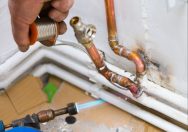Basement Waterproofing with a Do-It-Yourself Project
For sure, you can have severe headaches if you a leaking basement. But what are your options? You have two options: hire an expensive contractor or even do it yourself. Do it on your Basement waterproofing is a straightforward task if you use the appropriate solution, and it can save you time and money.
Don’t be intimidated by the prospect of waterproofing your home without the help of specialists. Numerous devices on the market can help you waterproof your basement. To assist you in making your decision, consider the Bayset options:
Basement Dry:
A drill in the basement floor and a probe are inserted in to hole to use this device. The examination is required for the detection of groundwater. The analysis will suck the water into the self-priming pump if water is found. If the water is evacuated from beneath the floor, the pressure is likewise removed, making this device so successful. If somehow the water never was turned off, the pressure would remain, causing the water to be pushed into any gap in the wall or floor.
Basement waterproof with crystals
For many years, it has been used all over the world. It’s really powerful since it penetrates deep through your walls/floors, where the crystals multiply over time, permanently sealing it! It can withstand a lot of pressure. It’s possible to use it on any concrete surface. The instructions come in a bucket as a powder mix with water and operate with a brush or roller.

SquidGee Dry
SquidGee Dry is fabrications that can be used on both concrete and block walls. Water is contained in the block’s holes by block walls. To drain the water, use the SquidGee Dry to drill small holes in the bottom layer of the block. It is not required to dig through every brick. The water is then directed to the SquidGee Dry. The method is also straightforward with poured walls. Poured walls, unlike block walls, really aren’t hollow.
Waterproofer Concrete
Another option is to purchase Concrete Water-proofer from your local hardware shop. This approach is the least cost, but it is also the least reliable for do-it-yourself waterproofing. The procedure is likewise simple; however, this is when the time-consuming aspect begins. Depending on how many cracks you want to fill or how many you have. When repairing and mending gaps in the floor or walls, you need to follow these four steps:
- Create a rectangular “U” shaped groove along the crack with a chisel.
- Scrub the debris out of the groove with a brush after flushing it with water.
- As recommended on the product, apply the cement water-proofer to the repaired area.
So, here are some Bayset options for how to waterproof your basement on your own. Choose one of the alternatives above, and your home ought to be dry for no time.



